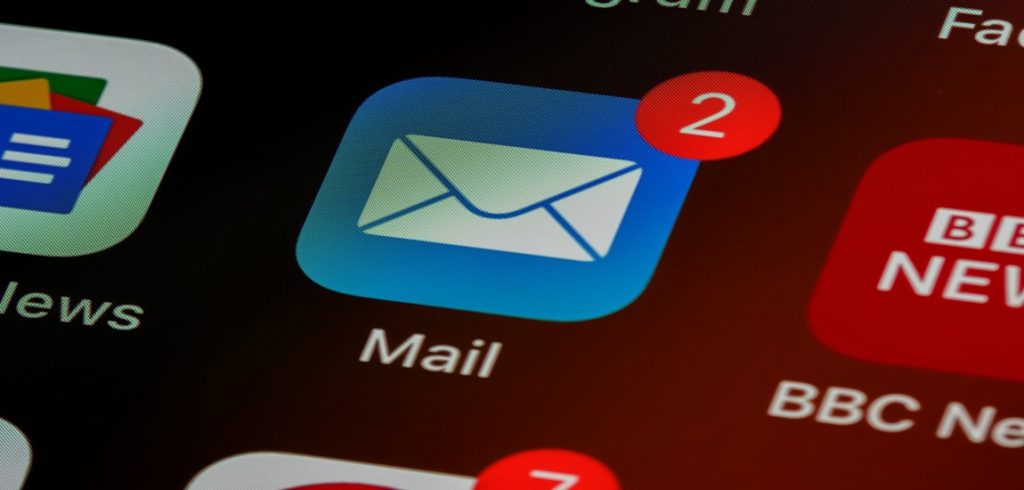
Pic Courtesy - UnSplash
Email marketing is still one of the most successful tools for company entrepreneurs, helping them to engage their audience, develop relationships, and increase conversions. According to a Campaign Monitor report, email marketing has an average return on investment (ROI) of $42 for every $1 spent, making it an affordable technique, particularly for startups with restricted funding.
This article provides eight email marketing methods that can alter your campaigns and help you develop deeper customer relationships, along with real-world examples.
1. Make Personalized Emails
Why Personalization Works? Personalized emails provide recipients with a more tailored experience, which increases engagement and open rates. Addressing the receiver by name, citing previous contacts, or proposing products based on previous behavior makes the material more relevant and timely.
Case Study: Amazon’s Personalized Recommendations Amazon’s powerful algorithm sends individualized emails with product recommendations based on previous searches, purchases, and browsing history. This tailored approach has helped Amazon increase conversion rates. Personalized product recommendations account for 35% of their total sales.
How to Implement? Use CRM data to segment your audience based on habits, preferences, and demographics. Then create personalized subject lines and email content for each group.
2. Make Dynamic & Appealing Ends
Why the Ending Matters? The conclusion of your email is the final touchpoint in your message, therefore it must leave a strong, favorable impression. A well-crafted conclusion invites consumers to engage further, whether through a sign-off that promotes your brand or a final push towards a call-to-action. (CTA).
Case Study: Airbnb’s Email Closing Strategy Airbnb’s emails frequently conclude with a personal, kind sign-off, inviting visitors to explore properties more. Their emails provide a smooth experience from beginning to end, with the conclusion encouraging consumers to return to the platform to continue browsing.
How to Implement: End each email with a value-driven statement or a nice closing remark that reminds the reader of the benefits of your product or service. Include links to your website, social media, or forthcoming events, and always conclude with a CTA that encourages the reader to act.
3. Add Call-to-Action (CTA)
Why CTAs Are Critical? The call-to-action (CTA) is a critical component of any email. A well-crafted CTA encourages the reader to take the next step, whether it’s buying a product, signing up for a webinar, or following your social media accounts.
Case Study: Dropbox’s Simplified CTA Approach Dropbox’s email marketing include simple yet effective CTAs such as “Download” and “Learn More.” These buttons are clear, actionable, and strategically positioned throughout the email to increase click-through rates (CTR).
How to Implement? Use action-oriented terms like “Shop Now,” “Sign Up,” or “Learn More.” Make sure your CTA is above the fold and easily visible. Consider utilizing different colors to make your CTA button stand out.
4. Make Visual & Interactive Templates
Why Visual Content Works? Visual and interactive emails attract attention and boost engagement. Humans perceive graphics 60,000 times faster than text, making them an essential component in email design. Polls, surveys, and videos are examples of interactive elements that improve the amount of time users spend with your email, hence enhancing engagement.
Case Study: Patagonia’s Interactive Email Campaign Patagonia, an outdoor clothing brand, used interactive emails to engage their customers by including attached films and attractive visuals. Their interactive advertisements not only educate clients about sustainability, but also increase product sales by exhibiting new collections in an interactive format.
How to Implement? Use Canva or Mailchimp to generate visually stunning and mobile-friendly email designs. Consider using interactive components like sliders, clickable buttons, or films to keep your audience interested.
5. Use A/B Testing
Why A/B Testing Is Essential? A/B testing, also known as split testing, allows you to experiment with various email elements to see which ones work best for your target demographic. You can improve the performance of your email campaigns by testing different subject lines, call to actions, and email designs.
Case Study: HubSpot’s A/B Testing Success HubSpot, a marketing software company, routinely employs A/B testing to improve its email messages. For example, they tested two different subject lines for their emails and discovered that the version with a question received a 27% higher open rate than the basic version.
How to Implement? Select only one element to test at a time, such as subject lines, CTA placement, or photos. Run the test on a subset of your audience, analyze the findings, and then apply the winning version to the rest of your campaign.
6. Use Smart Subject Lines
Why Subject Lines Matter? The subject line is the first thing your recipient sees and impacts whether your email is opened or ignored. A well-written subject line evokes curiosity, urgency, or relevancy, resulting in increased open rates.
Case Study: Groupon’s Effective Subject Lines Groupon was well-known for capturing attention with smart, clever, and frequently funny subject lines. They got consistently high open rates for their advertising emails by employing engaging and innovative language.
How to Implement? Keep subject lines to 50 characters or less and personalize them wherever feasible. Use action words and try to incorporate numbers or offers (for example, “Save 20% Today”). Avoid clickbait, which might hurt your credibility.
7. Make Organized Target Lists
Why Segmentation Is Key? Organizing your target lists based on customer behavior, demographics, or engagement history ensures that your email reaches the intended audience with the appropriate message. This improves the relevance of your emails, resulting in increased opening and conversion rates.
Case Study: Sephora’s Segmented Email Campaigns Sephora excels in segmenting email lists based on client preferences and previous purchases. They send targeted product recommendations to specific customer demographics, resulting in increased engagement and repeat purchases.
How to Implement: Use email marketing services such as Mailchimp or ActiveCampaign to segment your email list. Demographics (age, gender), activity (purchases, website visits), and engagement (open rates, click-throughs) are all common segmentation elements. Customize your emails to meet the specific requirements and interests of each segment.
8. Be Crisp & To The Point
Why Clarity is Key? In today’s fast-paced environment, your audience does not have time to read long emails. Clear, succinct language that goes straight to the point will keep the reader’s attention and enhance the possibility of action.
Case Study: Apple’s Minimalist Email Approach Apple is well-known for its clean, clear email designs and content. Their emails are typically brief, with a focus on images and a clear CTA. This basic approach is consistent with their brand and allows users to easily engage with the information.
How to Implement? Keep your email copy concise and focused. Use bullet points or brief paragraphs to minimize needless words. Make sure your message is easy to read and conveys the key ideas immediately.
Email marketing is a vital approach for company entrepreneurs since it provides a high return on investment while allowing for direct engagement with your target audience. Personalized emails, dynamic ends, strong CTAs, visual layouts, A/B testing, smart subject lines, organized target lists, and clear content may all help you design email campaigns that resonate with your audience and drive conversions.
Don’t forget to constantly monitor and assess your email marketing initiatives. With thorough testing and iteration, your emails will not only reach the inbox but also resonate with your target audience, resulting in a more successful growth journey for your firm.




More Blogs
Startup & Maintaining Morale: Navigating the Rollercoaster of Growth
Lack of Strategic Planning: A Serious Lapse !
Startup & Legal Issues : Survival In the Legal Labyrinth